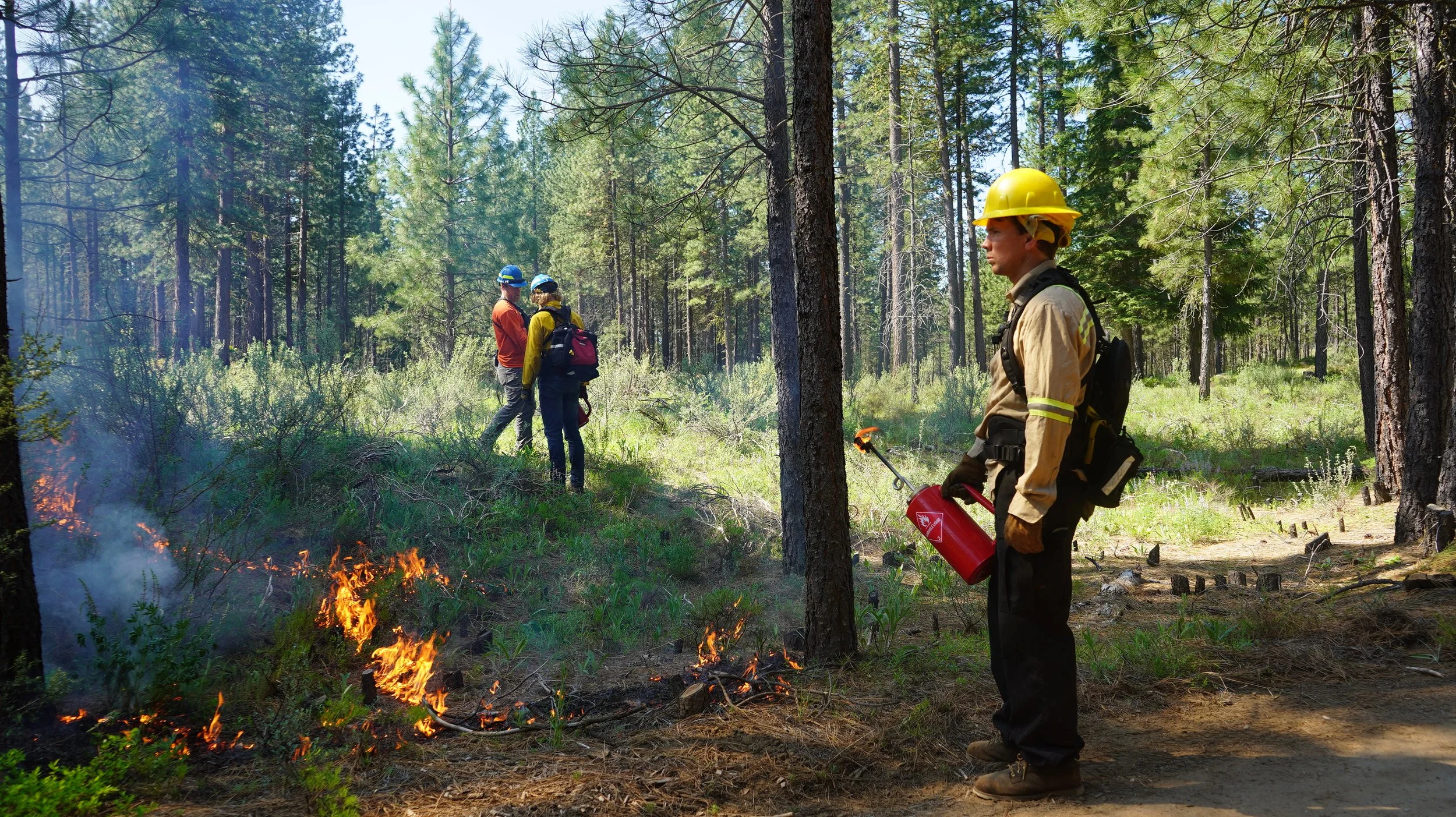WHAT IS PRESCRIBED FIRE?
Fire is an important part of any ecosystem. Disturbances such as fire change landscapes by altering plant and animal populations, removing some species, and allowing others to thrive. These changes can lead to healthy, diverse ecosystems that are often less prone to disease and pest outbreaks.
In the Pacific Northwest, wildfires and those set by native tribes have been an integral part of the landscape. Native tribes used fire to manage forests and grasslands for food and resource production. Fires increase the openness of forest floors, allowing more habitable space for desirable food species such as camas, roots, and berries. In addition to improving vegetation, fires also created better habitat for big game species such as elk and deer. The variation in land cover as a byproduct of burning ensured improved food security.
For the past century, however, forest managers have suppressed fire at the urging of the public and to protect valuable resources. Fire can understandably be a destructive force to those who live in areas that are fire-prone. While wildfires are a healthy part of the ecosystem, to humans, they can be a risk to life and property. As more people began living in the west, fires became an increasing danger to the public, so the Forest Service established a tradition of suppressing fires at all costs. Decades of suppression have taken their toll, however. Frequent fires remove brush, downed woody material, and grasses. By eliminating fires from these ecosystems, the landscape has changed, and the risks of very large and damaging fires have increased due to the accumulation of fuels.
Prescribed fire, sometimes referred to as a “controlled burn,” is a term used to describe fires set by land managers in order to achieve some management goal. Prescription refers to the different management techniques that are proposed by a land manager. Because fire behavior is dependent on fuels, weather, and topography, prescribed fire enables land managers to manage fuels in a situation where weather and topography are predictable. However, prescribed fire is not a one-time treatment; it is often used periodically and in conjunction with other management practices such as mechanical thinning and herbicides.
Some reasons for using prescribed fire include:
Reducing hazardous fuels: by reducing the available amount of fuels on the ground, future fires in the area will be less intense resulting in decreased fire risk.
Disposing of logging debris: after harvesting and thinning in forests there is often a large amount of woody debris left behind. Prescribed fire removes this debris before more vegetation accumulates, resulting in a larger fire hazard.
Improve wildlife habitat: Prescribed fire is used to create and improve habitat conditions by stimulating the growth of vegetation for browse, encouraging the growth of native plant species, and providing dead woody debris.
Manage competing vegetation- Often, historically fire prone forests that have experienced fire exclusion have been invaded by less fire tolerant species. Reintroducing fire removes some of these invasive plants while allowing native fire adapted plants to thrive.
Control disease: fire has been a natural remover of disease and infections in plants.
Improve forage for grazing: This is one of the main reasons for Native Americans setting fires, as fires created openings in the landscape for grasses and other grazing materials to grow and encouraged big game.
Enhance appearance: Burning can increase flowering annuals, open stands, and improve aesthetics.
Improve access: open stands allow for greater movement of wildlife as well as increase access for management activities such as building roads, planting trees, and timber harvest.
Cycle nutrients: Fire stimulates important chemical reactions for nutrient cycling, such as releasing nitrogen and phosphorous into the soil.

